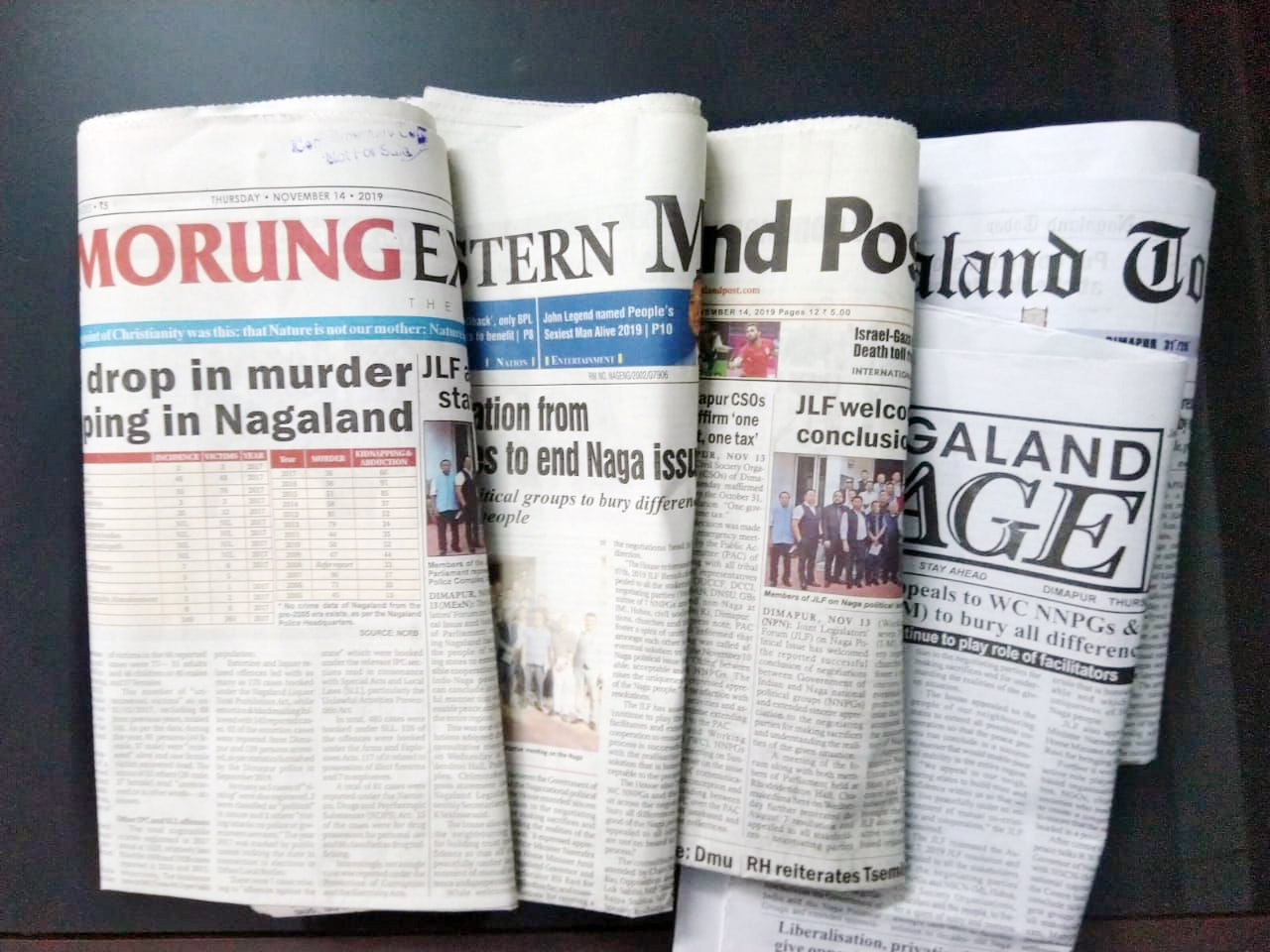'Media in Nagaland has grown as voice of the voiceless'

Representation Image
Vishü Rita Krocha
Kohima | November 14
The road has not been easy for journalism in the state to take off, especially during the early years when many senior journalists were reporting from a conflict ridden place, torn between threats and journalistic truth. In the 1990s when the Indo-Naga conflict was rife in the state, Mhalezolie Kire, Editor & Publisher of Capi, one of the longest surviving vernacular newspaper in Nagaland, recalls how different groups demanded that a particular news story be carried on the front page or sometimes be left unpublished on several occasions. “But we did what we had to do, and never let these threats get in the way of truth,” he says.
“We also struggled a lot for lack of better facilities in technology and composed news manually, letter by letter. Especially international and national news would be delayed because there was no internet then and we would rely on television and radio besides subscribing to national newspapers,” he enlightens. Another problem, he adds was translation, which all summed up to sleepless nights, working from 11:00 am to 2:00 am in the night.
Having got into journalism right after he finished his post graduation, Kire took over Capi in 1997, which was established in the year 1988. Having given the best of his youth to journalism, he feels that it was sheer passion and enthusiasm for the job that has helped him survive all the threats and odd sleeping hours, enabling him to still pursue it with vigour. “With the advent of technology, everything has changed and things have become a lot easier but we have to continue to strive for quality journalism,” he puts across.
Okenjeet Sandham, Editor of North East Press Service (NEPS), who was earlier associated with Nagaland Platform (which was later rechristened as Nagaland Journal), North East Sun, The Statesman, Hindustan Times and several other magazines and newspapers, also recalls writing from a conflict zone. “When you have armed movement, writing is always risky but we always balanced without compromising professional ethics,” he states. “Those days, we didn't have internet and used telephone and fax, and there were times when, in the process of rewriting, our stories would be modified at the news desk, and because of the sensitivity of the issue, that would sometimes create havoc in our working system,” he further recalls.
His experience in the field has taken him to undesirable places of coming across dead bodies and firings, but none of these unpleasant encounters has deterred the spirit of journalism in him.
Another senior journalist, H Chishi, who started his career in journalism in 1999, right after his post graduation feels that, there was a huge gap in communication and technology in those days. In his words, “we started with portable typewriter which we used to carry around. There was only one fax machine at BSNL/telegraph office near head post office and we faced the challenge of not having proper technologies and communication system compounded by political problem where there was no healthy environment for the fourth estate to function. “However, under such circumstances, he affirms that “media in Nagaland has grown as the voice of the voiceless, strengthening the democracy.”
But in the meantime, in this new age of technology, he feels that journalists are faced with the challenge of the emergence of social media where one have to put in more effort to cope with the situation. “The system of reporting has to change with more analytical piece to make our stories more effective,” he impresses upon.
H Chishi has previously written for Nagaland Observer, Northeast Daily, Northeast Frontier Magazine, The Telegraph, Nagaland Page and contributed articles to several magazines and periodicals. A news reader at the All India Radio and a casual editor at Doordarshan Kendra Kohima, he is currently the Bureau Chief of Nagaland Page.
Meanwhile for this new entrant to journalism with a year's experience, Medolenuo Ambrocia, Nagaland Correspondent for EastMojo, it all started with a promotional video she made for the North East Fiesta. She joined with no formal training or experience but in less than a month, she was groomed to become the state correspondent for Mobile-first digital news platform in the North East. “To be honest, I never thought I would be a journalist. I always wanted to teach in a college but I feel I have started with the right organisation (EastMojo),” she expresses. Despite having cleared the National Eligibility Test (NET) exam, she no longer thinks of being in the teaching profession.
Being in the digital media, she says, is a challenge to handle both writing stories and capturing videos but she finds the challenge exciting and rewarding. “I've got the taste of journalism and the impact that we make is very huge, which makes us want to be more responsible and have more accountability,” she profoundly states.






